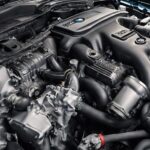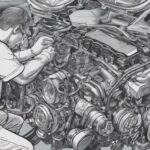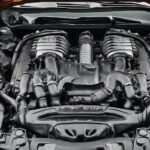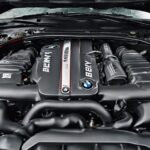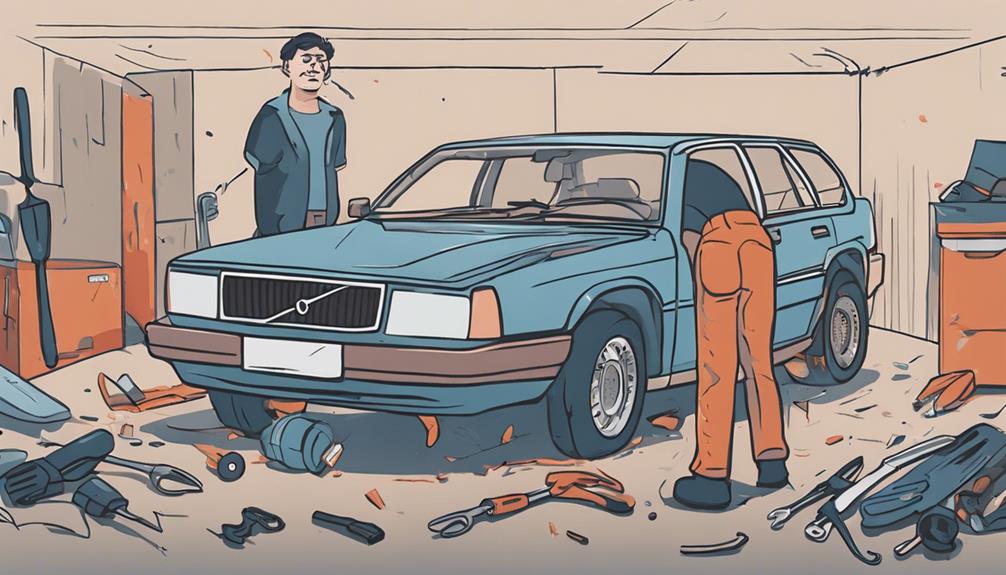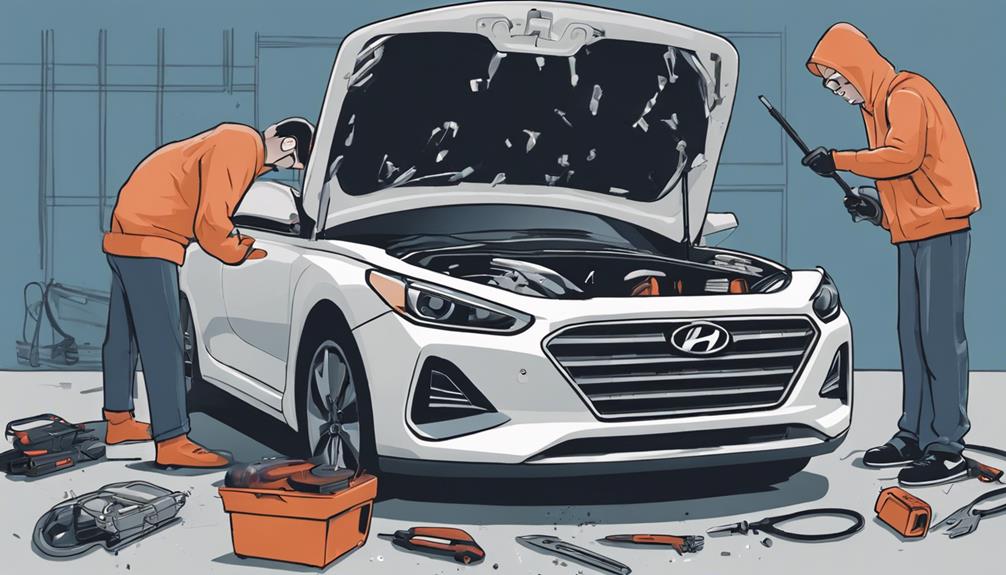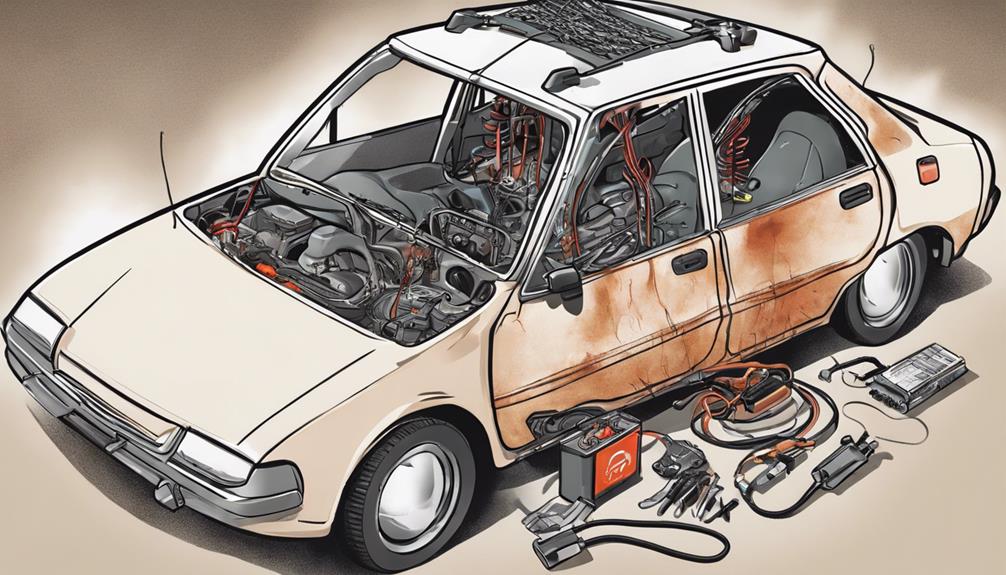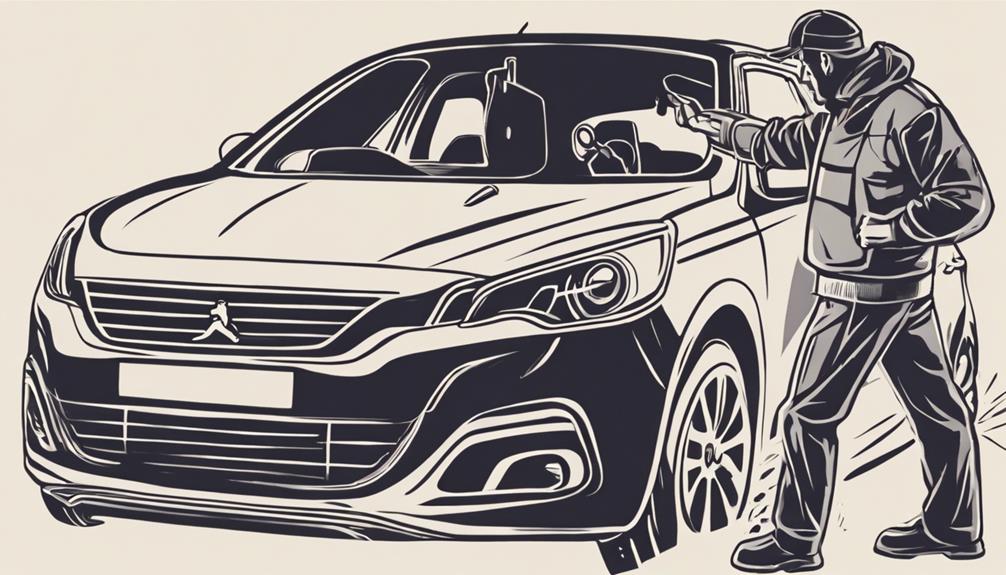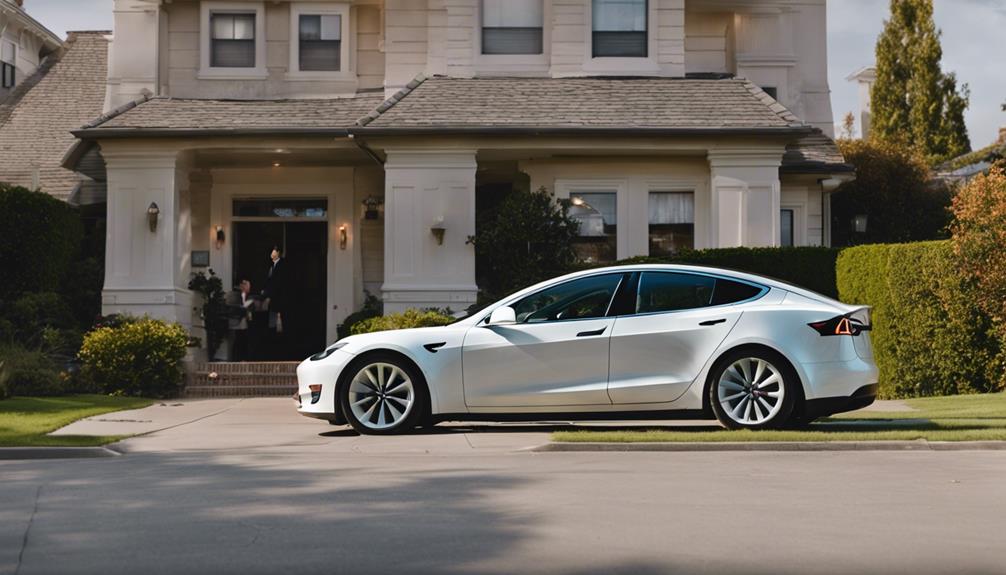If your Volvo won't start, start troubleshooting with common causes like a dead battery, faulty starter motor, or corroded starter wires. Make sure to inspect and fix starter cables and connectors for any damage, corrosion, or loose connections. You should also check the Central Electronic Module (CEM) for corrosion and potential malfunctions. If the issue persists, look out for a bad starter by listening for clicking noises and checking for loose connections.
Address key issues like transponder recognition and shifter alignment, and verify fuel system functionality. Understanding diagnostic trouble codes can pinpoint specific problems efficiently. Get your Volvo back on the road by addressing these issues promptly and effectively.
Key Takeaways
- Inspect starter cables for damage or corrosion.
- Troubleshoot Central Electronic Module (CEM) for faults.
- Check for clicking noise to diagnose bad starter.
- Verify key fob, shifter position, and fuel pump.
- Read and understand Diagnostic Trouble Codes (DTCs) for specific issues.
Common Causes of Volvo Starting Issues
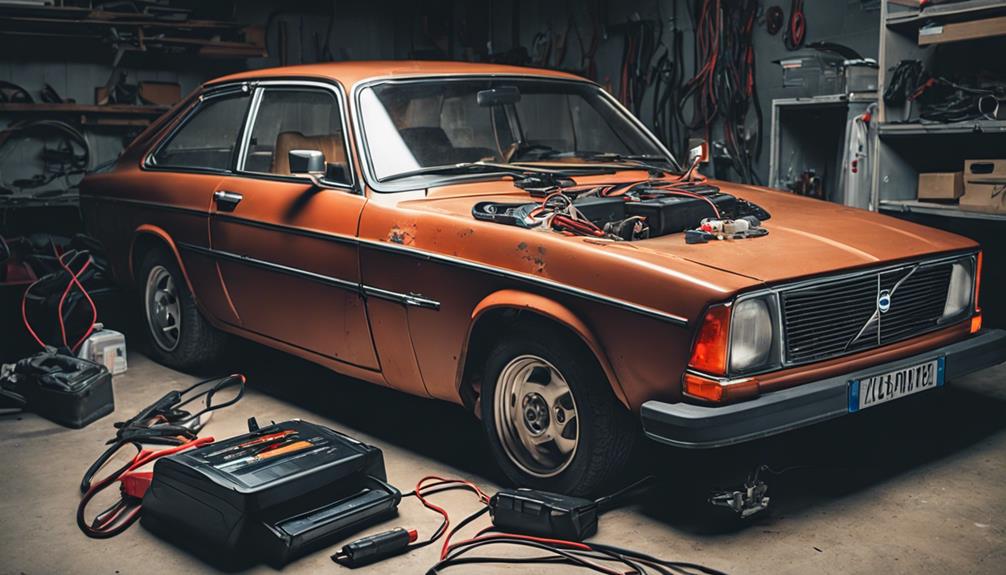
If your Volvo is experiencing starting issues, understanding the common causes can help you diagnose and resolve the problem efficiently. One prevalent issue that could be causing your Volvo not to start is a dead battery. When the battery lacks the necessary charge, it can hinder the engine from cranking, leading to starting troubles. Another potential culprit is a faulty starter motor. A defective starter motor can result in no engine turnover or cranking, preventing your Volvo from starting smoothly.
Moreover, corroded or loose starter wires could be contributing to the problem. Corrosion or loose connections on the starter cables can disrupt the signal to the starter solenoid, affecting the starting process. Additionally, ignition system problems, such as a faulty ignition switch or immobilizer, may also be at the root of your Volvo's starting issues. By addressing these common causes systematically, you can better identify and resolve the starting problem with your Volvo efficiently.
Inspecting Starter Cables and Connectors
When examining starter cables and connectors on your 01-07 Volvo S60, S80, V70, and XC90, look for signs of damage or wear on the electrical connector leading to the starter solenoid. Check for corrosion or loose connections that may impede the flow of electricity to the starter.
Confirm that the red wire providing power to the starter solenoid is securely connected to avoid starting issues. Tighten any loose connections and clean off any corrosion present on the starter cables to maintain a strong electrical connection.
By inspecting the starter cables and connectors thoroughly, you can guarantee proper signal transmission for starting the vehicle efficiently. The integrity of these components is essential for the starting system to function effectively, so addressing any issues promptly will help prevent any potential starting problems in your Volvo.
Keep an eye on these crucial parts to ensure a smooth starting process every time you turn the key.
Troubleshooting the Central Electronic Module
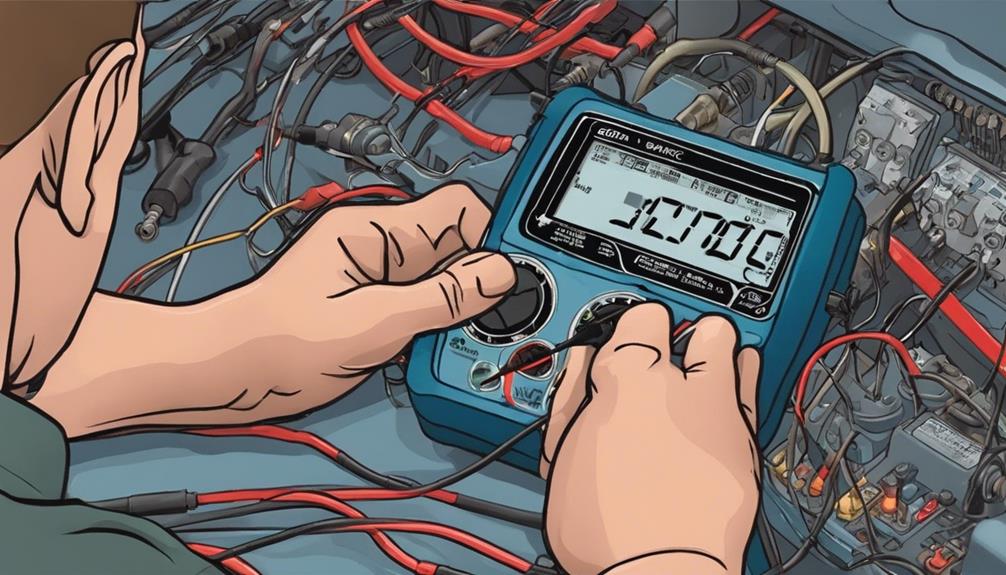
Troubleshoot the Central Electronic Module by examining connections for signs of corrosion that could potentially cause starting issues in your Volvo. Corroded connections on the CEM can disrupt the signal path and lead to intermittent starting problems. Here are some key points to take into account:
- Corroded Connections: Check for any corrosion on the connections of the Central Electronic Module.
- Starting Issues: Address any starting problems that may arise from faulty CEM components.
- Faulty CEM: A malfunctioning CEM can cause the car to have difficulties starting.
- Signal Path: Ensure a clear signal path from the CEM to the starter and other crucial components.
- Replacement: If necessary, contemplate replacing a faulty CEM to resolve starting issues efficiently.
Properly troubleshooting the Central Electronic Module can help you identify and rectify starting problems in your Volvo, allowing for a smoother driving experience.
Checking for a Bad Starter
To determine if your Volvo has a bad starter, listen for any clicking noise or lack of response when attempting to start the engine. A bad starter can prevent the engine from cranking, causing frustrating starting issues. The culprit could be a faulty starter solenoid, corroded wires, or loose connections. Check the wiring connected to the starter solenoid for any signs of corrosion or looseness that may be disrupting the electrical flow. If you hear a clicking noise when turning the key, it could indicate a bad starter that needs attention. Addressing these issues promptly is essential for getting your Volvo back on the road.
| Common Issues | Symptoms | Solutions |
|---|---|---|
| Corroded Wires | Engine doesn't crank | Clean or replace wires |
| Bad Starter | Clicking noise when starting | Replace starter |
| Loose Wires | No response when starting | Tighten connections |
Assessing a Defective Key
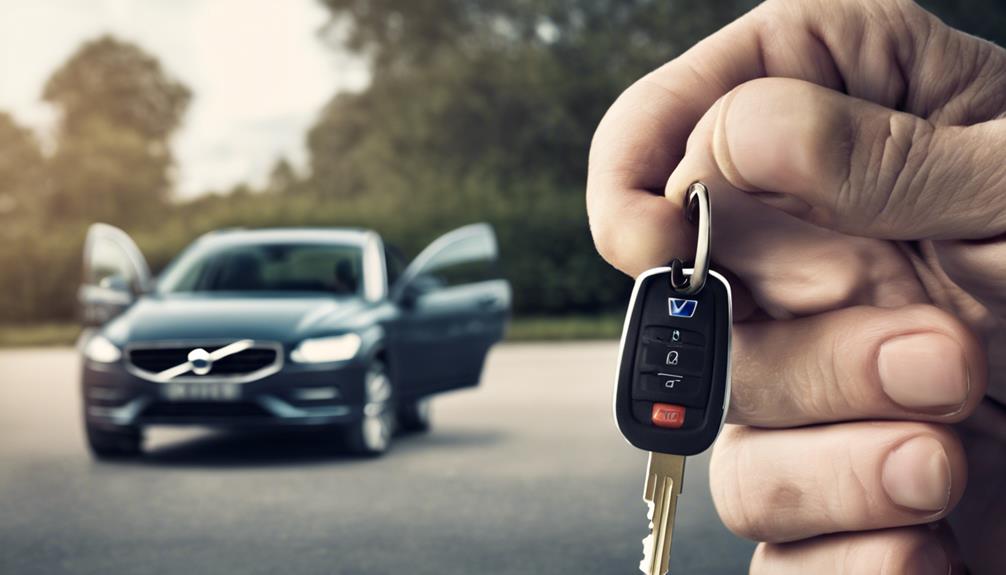
If your Volvo is facing starting problems, one possible factor to think about is the functionality of the key being used. Here are some key points to ponder when evaluating a defective key:
- Check if the transponder in the key is being recognized by the car's system.
- Verify the battery in the key fob isn't dead, as it can impact the starting process.
- Confirm the shifter is in the correct position, as some Volvo models require it to be in Park or Neutral to start.
- Examine the throttle pedal position, as some models may have a safety feature that requires the pedal to be pressed for starting.
- Investigate potential fuel pump issues, as they can also hinder the car from starting properly.
Understanding these aspects related to the key can help you troubleshoot starting problems effectively.
Verifying Shifter Position
Verify the alignment of the shifter lever to make sure it matches the selected gear, like Park or Neutral.
The Neutral Safety Switch is a key component to confirm, as it can prevent the engine from starting if it detects the wrong shifter position.
Confirming these points are in order will help diagnose any issues related to the shifter position and get your Volvo running smoothly again.
Shifter Lever Alignment
Confirm that the shifter lever is accurately aligned in either Park or Neutral to enable the starter to engage smoothly and commence the engine start-up process. Here are some key things to consider:
- Verify accurate shifter alignment to prevent starting issues.
- Validate the shifter is in the designated position for the starter circuit to activate.
- Check dashboard indicator lights for shift position alerts.
- Avoid improper gear selection by confirming proper shifter alignment.
- Be mindful of safety interlocks that may hinder starter operation.
Neutral Safety Switch
To guarantee your Volvo starts smoothly, pay attention to the Neutral Safety Switch and how it confirms the shifter position.
The neutral safety switch is an essential component that ensures your vehicle can only start in Park or Neutral. It acts as a safety feature to prevent the engine from starting if the transmission gear is engaged.
Verifying that the shifter is in the correct position, either in Park or Neutral, is important in ensuring the neutral safety switch functions correctly. If the shifter isn't in the designated positions, the neutral safety switch may hinder the engine from starting, leading to potential starting problems.
Hence, always double-check the shifter position to avoid issues related to the neutral safety switch and guarantee a hassle-free start for your Volvo.
Addressing No Fuel Problems

In diagnosing no fuel problems in your Volvo, it's important to first examine the fuel pump fuse and relay for potential starting issues related to fuel delivery. To address this, consider the following:
- Check Fuel Pump Fuse and Relay: Verify these components are functioning correctly to deliver fuel to the engine.
- Inspect Fuel Pump Operation: Confirm that the fuel pump is operating properly and generating adequate fuel pressure for starting.
- Evaluate Fuel Filter: Examine the fuel filter for any clogs that may be hindering fuel flow to the engine.
- Test Fuel Injectors: Verify the fuel injectors are functioning as they should and delivering fuel to the engine cylinders.
- Examine Fuel Lines: Check for leaks or blockages in the fuel lines that could be affecting the fuel supply to the engine.
Reading Diagnostic Trouble Codes
When facing a Volvo that won't start, understanding fault codes is essential. Interpreting these error messages can provide valuable insights into potential issues with your vehicle.
Understanding Fault Codes
Understanding fault codes provides an essential roadmap for pinpointing the underlying issues causing starting problems in your Volvo. Here are some key points to take into account:
- Fault codes: Offer specific information about the vehicle's systems.
- Diagnostic trouble codes (DTCs): Help identify the source of starting problems in Volvos.
- Reading fault codes: Pinpoints the exact malfunctioning component or system.
- OBD-II scanners: Retrieve fault codes for troubleshooting from the car's computer.
- Effective diagnosis: Understanding fault codes is critical for successful diagnosis and repair of starting issues in Volvos.
Interpreting Error Messages
To effectively diagnose starting issues in your Volvo, interpreting error messages, specifically Diagnostic Trouble Codes (DTCs), is essential. DTCs provide detailed insights into potential faults related to your car's systems, including the starter motor, car battery, ignition switch, voltage drop, and wiring harness. By using an OBD-II scanner or code reader, you can access these codes and understand the specific issues affecting your vehicle. Below is a table illustrating how different components like the starter motor, car battery, and wiring harness can trigger specific DTCs:
| Component | Possible DTCs |
|---|---|
| Starter Motor | P0300, P0335, P0340 |
| Car Battery | P0562, P0563, P0564 |
| Wiring Harness | P0100, P0135, P0155 |
Understanding these codes will help you pinpoint the exact problem and take appropriate steps to resolve it efficiently.
Troubleshooting Based on Codes
By utilizing an OBD-II scanner to read Diagnostic Trouble Codes (DTCs), you can efficiently troubleshoot and identify specific issues affecting your Volvo's starting performance. When troubleshooting based on codes:
- Diagnostic trouble codes (DTCs) provide specific information about potential issues in the vehicle's systems.
- Reading DTCs requires an OBD-II scanner that can connect to the vehicle's onboard computer.
- Each DTC corresponds to a specific problem or malfunction, helping to pinpoint the root cause of starting issues.
- Understanding DTCs can guide the troubleshooting process and prevent unnecessary part replacements.
- DTCs can be cleared after troubleshooting and fixing the underlying problem to reset the system and check for any recurring issues.
Frequently Asked Questions
What Would Cause a Volvo Not Start?
If your Volvo won't start, potential culprits include a dead battery, faulty alternator, ignition issues, or a malfunctioning starter motor. Troubleshooting steps like checking connections, keys, and the CEM can help pinpoint the problem.
What Would Cause My Car to Suddenly Not Start?
If your car suddenly won't start, it could be due to a dead battery, faulty alternator, fuel delivery issues, ignition system problems, or a failed starter motor. Proper diagnosis and timely repairs are essential.
How Do You Fix an Engine That Wont Start?
To fix an engine that won't start, you need to first diagnose the issue by checking the battery, starter motor, ignition switch, fuel delivery system, and key components. Addressing these areas can help determine and resolve the problem effectively.
Why Does My Volvo Click but Won't Start?
When your Volvo clicks but won't start, it usually signals a problem with the starter solenoid, battery, or related components. Addressing issues like weak batteries or faulty relays can resolve the clicking sound issue.

